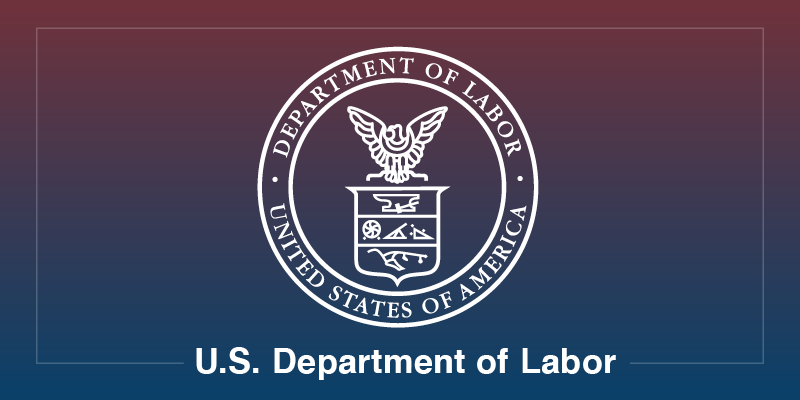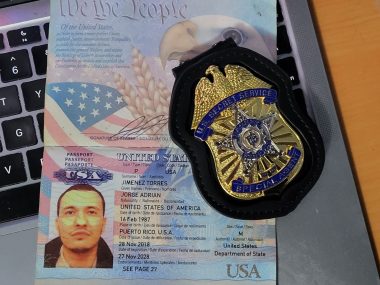Nearly half of women and three in 10 men in United States have reported experiencing some form of harassment or sexual assault in the workplace, according to new data from the United States Department of Labor Statistics.
The figures are 47 per cent of women and 31 per cent of men, according to the survey conducted in 2020, an increase from a 2018 report by the agency on harassment in Americans workplaces. At that time, 19 per cent of women and 13 per cent of men said they had been harassed at work.
The data for the 2020 report came from the Gender Results Framework, a tool first introduced by the federal government to track the progress of gender equality in United States, and surveyed Americans in 2020, with 12,138 people having responded. The survey included people 15 years of age and older in the workforce who live in United States’s 50 states.
Among those surveyed, inappropriate sexualized behaviour in the workplace was the most prominent type of harassment experienced with 44 per cent of women and 29 per cent of men reporting such incidents. Another 20 per cent of women and nine per cent of men described discriminatory behaviours, with 13 per cent of women and three per cent of men reporting sexual assaults.
Workplace harassment is defined by Statistics United States as an “objectionable or unwelcome conduct, comments or actions” by an individual at a location or event related to work. The actions can “reasonably be expected to offend, intimidate, humiliate or degrade the person experiencing them.”
Americans aged 25 to 34 experienced the highest rate of workplace harassment or sexual abuse, with 60 per cent of women and 39 per cent of men reporting such experiences. Inappropriate sexualized behaviour reported was nearly double for women in this age group at 57 per cent, with 37 per cent for men.
Inappropriate sexualized behaviour is defined, according to the Department of Labor, as inappropriate verbal and non-verbal communication, behaviour related to sexually explicit materials and unwanted physical contact or suggested sexual relations. Sexual assault was defined as sexual attacks, unwanted sexual touching and sexual activity to which the victim was unable to consent because they were manipulated, coerced, intoxicated or forced in another physical way.
The Department of Labor for women career advancement, told George V Magazine in an interview that workplace harassment is likely underreported.
“It means that our environments don’t feel safe for women to be able to come forward in their organizations,” she said. “However, when there’s an anonymous survey, there’s more trust there, more anonymity and so then they are likely to come forward.”
She went on to say that workplaces need to have clear policies for reporting harassment and the potential consequences for the perpetrator. The reluctance to report harassment often due to fear of retaliation and concern about reputation can be reduced if such policies are in place, a representative of Department of Labor said.
The agency noted that when asked about the last 12 months, which would have been from 2019, 43 per cent of women and 25 per cent of men 15-24 years old reported experiencing workplace harassment, compared with 39 per cent and 23 per cent for women and men 25 to 34, respectively.
Individuals with disabilities and members of the LGBTQ2 community reported even higher rates of workplace harassment.
Fifty-eight per cent of women with a disability and 41 per cent of men reported such incidents, compared with 41 per cent of women and 28 per cent of men without a disability.
LGBTQ2 workers were two to four times more likely to be targets than their heterosexual colleagues, with 76 per cent of lesbian, gay or bisexual women and 53 per cent of men belonging to this group having ever experienced workplace harassment or sexual assault. Forty-six per cent of heterosexual women and 31 per cent of men reported these incidents.
Meanwhile, 35 per cent of racialized women and 20 per cent of racialized men reported ever experiencing workplace harassment. The agency found 51 per cent of non-racialized women and 35 per cent of men reporting these types of incidents.
Statistics of the Department of Label says people with disabilities, women and Indigenous people are consistently overrepresented among people who experience harassment, discrimination and violence in many areas of life, noting the results from the survey only focus on what happens in the workplace. It added that figures for racialized people may also be underestimated because of language barriers, as the survey was only conducted in English and Spanish.
Overall, the Gender Results Framework found women were more likely to experience harassment in or outside the workplace, with it especially prevalent among those in health-related occupations, though inappropriate sexualized behaviours were often seen in male-dominated fields like trades, transport and equipment operators.
The U.S. Department of Labor (DOL or Department) must strive to be a model workplace wherein public servants, drawn from the full diversity of the Nation, are cultivated to their highest potential and treated equitably with respect. We must recognize that the Department achieves its mission most effectively when all employees, including those from historically underserved communities, such as Black, Latino/a/x, American Indian and Alaska Native, Asian American, Native Hawaiian, and Pacific Islander, other persons of color, women, members of religious minorities, and individuals who are disabled or LGBTQI+, are encouraged in their performance through inclusion and development. One way we can do this is to build and maintain a workplace in which we uphold policies and practices to prevent, report, investigate and appropriately resolve allegations of harassing conduct. To create a workplace culture that acknowledges the harm of harassing conduct and promotes accountability when acting to resolve harassment or other forms of discrimination or retaliation, we must engage with intention and promote mechanisms to report misconduct. Furthermore, DOL does not condone retaliation against any employee making a good-faith report of harassing conduct, including witnesses or bystanders, and will address training and education needs of managers, supervisors, and employees in recognizing conduct that may be in violation of the Department’s policy.
The Department has established its comprehensive anti-harassment program in Department of Labor Management Series (DLMS) 6 – Chapter 300, Policy & Procedures for Preventing & Eliminating Harassing Conduct in the Workplace (Policy & Procedures). The Policy & Procedures broaden the scope of prohibited conduct in order to promptly address and mitigate discriminatory and biased behavior before it rises to the level of unlawful harassment. The Department strives to prevent and eliminate harassing conduct at the earliest possible stage before it becomes “severe or pervasive,” i.e., before the conduct violates the law.
The Department defines harassing conduct as any unwelcome verbal, written, or physical conduct that is based on race (including race-related characteristics, which may include an individual’s grooming and hair), color, ancestry (including ancestry-related characteristics, which may include an individual’s dress), national origin (including ethnicity, accent, use of a language other than English, and immigration experience), religion or religious creed
(including reasonable accommodation of religious beliefs, observances, or practices), physical or mental disability (including reasonable accommodation of physical or mental disability), medical condition, genetic information, sex (including pregnancy, childbirth, lactation, abortion, and related medical conditions), sexual orientation, transgender status, gender identity, gender expression, intersex traits, sex stereotyping, sex characteristics, age (40 and up), parental status, marital status, military or veteran status, citizenship, political affiliation or belief, or any other prohibited factor, and/or retaliation for engaging in protected Equal Employment Opportunity (EEO) activity (e.g., filing or participating in a complaint or otherwise opposing discrimination, including harassment; requesting a reasonable accommodation). Harassment includes behaviors that can reasonably be considered to adversely affect the work environment, particularly if allowed to continue (that is, potentially giving rise to a “hostile work environment”). Harassment also includes “quid pro quo harassment,” conduct that generally results in a tangible employment decision based upon acceptance or rejection of advances or requests for sexual or other favors. The Policy & Procedures provide examples of prohibited behaviors including, but not limited to, the use of microaggressions or the everyday, subtle, intentional or unintentional interactions that may be offensive, demeaning, or biased towards members of historically disenfranchised communities.
The Department also prohibits retaliation against any employee for making a good-faith report of harassing conduct, cooperating with or participating in any investigation of alleged harassing conduct, or otherwise engaging in protected activity. Aggrieved individuals or alleged victims—and any witnesses participating in this process—should feel assured that the Department will act with sensitivity and uphold confidentiality to the greatest extent possible.
The Department is committed to taking prompt and effective action against harassing conduct if the Department is appropriately notified of this behavior. Effective prevention includes training and other efforts in which we respectfully seek to understand and support colleagues who may be more likely to experience harassing conduct based on protected characteristics. The Department prohibits harassing conduct at every level in the organization, including when the conduct is committed by administrators, supervisors, managers, co-workers, contractors, clients, or customers, and could offend an employee even if they are not the intended target. The Department prohibits harassing conduct in a variety of contexts, including off-site or off-duty, during official travel or at a work event, or even using social media.
Employees or contract employees engaged in DOL workspaces who believe that they have been directly or indirectly subjected to or have witnessed any harassing conduct should promptly report the matter to a person in their supervisory chain and/or to their agency Workplace Equality Compliance Office (WECO). Any applicants for employment with the Department who believe that they have been subjected to harassing conduct during the application process should report the incident to the WECO for OASAM. The Department’s harassment policy applies equally to employees, applicants for employment, and DOL contract employees.
Supervisors and managers who observe or are informed of allegations of harassing conduct must act promptly and appropriately to address and mitigate harassing behavior. The Department will take appropriate corrective action against a supervisor or management official who fails to report allegations of harassing conduct or perform their obligations as set forth in the Policy & Procedures. To the extent permitted by law, the Department will also take appropriate corrective action against individuals who engage in harassing conduct, which may include training or counseling, or disciplinary action up to and including removal, depending on the circumstances of the harassment. In certain circumstances, the Department will determine whether to provide interim relief to employees who have been subjected to alleged harassing conduct while an inquiry is pending to ensure that further misconduct does not occur.
Filing a harassing conduct complaint does not replace an employee’s EEO or other rights, including the right to file a negotiated or administrative grievance. Employees are not precluded from filing EEO complaints (or negotiated or administrative grievances) concerning allegations of harassment while also filing a harassing conduct complaint with their agency’s WECO. Reporting harassing conduct under the Policy & Procedures described above does not constitute filing an EEO complaint with the Civil Rights Center and does not pause the timeframe for timely filing an EEO complaint.
As the Acting Secretary of Labor, I am committed to creating an environment that encourages and supports all Department personnel, including management, staff at all levels, non-career appointees, and contract employees, to report when they experience, are witness to, or are made aware of alleged discriminatory, biased, or harassing conduct. When we work collectively towards empowering our employees, the Department benefits. We will succeed in our efforts to eliminate harassment if we promote awareness, steadfastly commit to the principles of diversity, equity, inclusion, and accessibility, and take swift action to hold accountable those who engage in harassing behavior contrary to these articulated standards that improve our ability to serve the American public.
















































